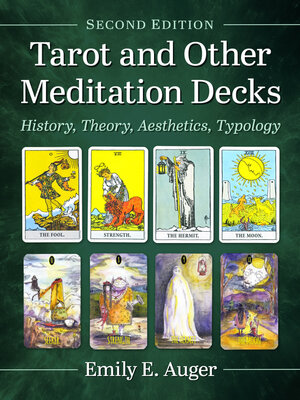
Sign up to save your library
With an OverDrive account, you can save your favorite libraries for at-a-glance information about availability. Find out more about OverDrive accounts.
Find this title in Libby, the library reading app by OverDrive.



Search for a digital library with this title
Title found at these libraries:
| Loading... |
Arthur E. Waite and artist Pamela Colman Smith's Rider-Waite Tarot (1909) is the most popular Tarot in the world. Today, it is affectionately referred to as the Rider-Waite-Smith Tarot in recognition of the high quality of Smith's contributions. Waite and Smith's deck has become the gold standard for identifying and analyzing contemporary Tarot and other meditation decks based on archetypes.
Developments in both visual and literary history and theory have influenced Tarot since its fifteenth-century invention as a game and subsequent adaptations for esotericism, cartomancy, and meditation. This analysis consider Tarot in relation to established modern and postmodern art movements, such as Symbolism, Surrealism, and Pattern and Decoration Art, as well as the concepts and theories informing both the dominance and the dissolution of the modernist "grid" and hierarchical priorities. This work also explores the close connection between Tarot and the invention of the literary novel and includes new material on the representation of Tarot in film and fiction. A new chapter addresses the growing influence of the archetypal "shadow" and "shadow work" on Tarot as an artistic form, narrative genre, and practice in the new millennium.






